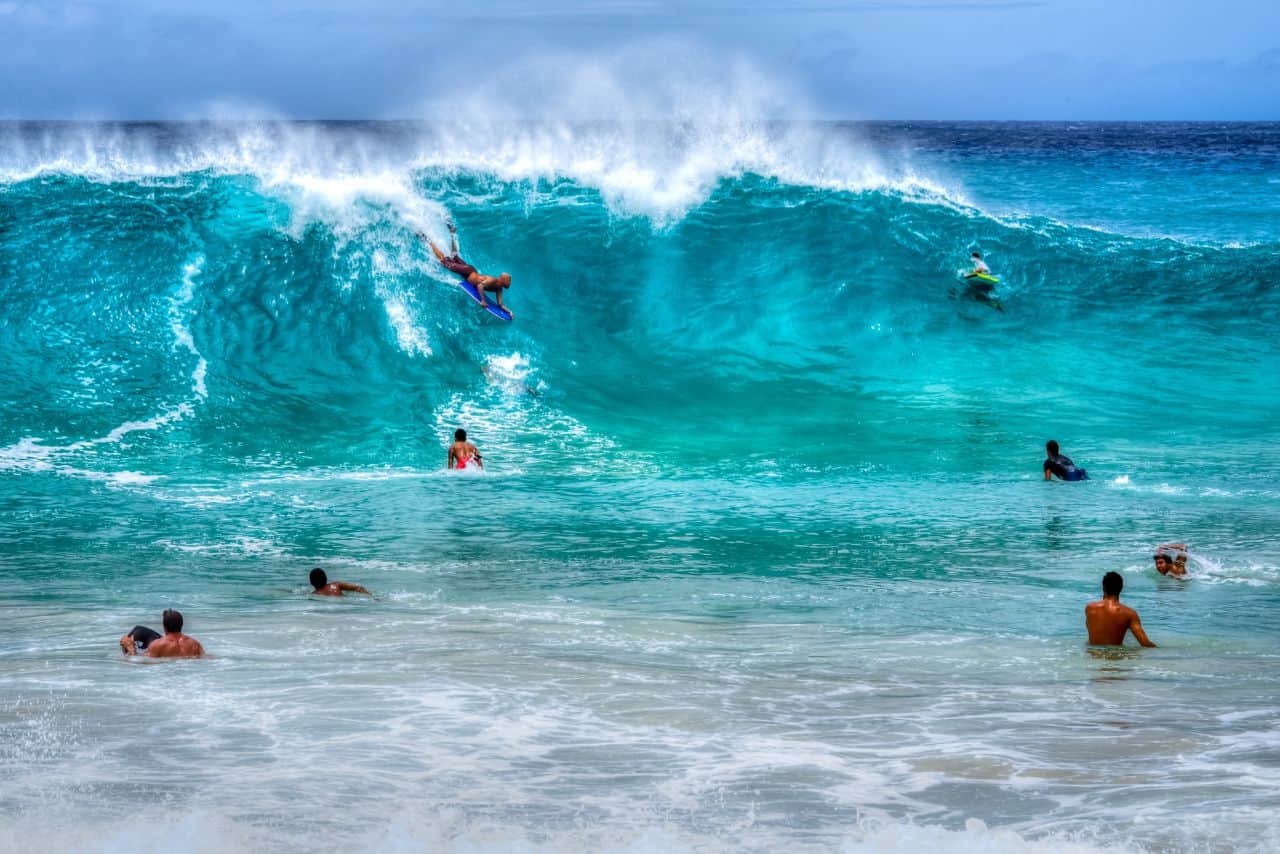The surf in Hawaii has a special character that draws surf enthusiasts from around the world. The towering waves called pipelines form when the Pacific groundswell reaches coastal coral reefs and lava spires and breaks out into huge water curls. Nowhere else in the world does the geology of a coastal area generate the kind of wave action that Hawaii does. The challenges that the waves present are often unfamiliar ones, even to experienced surfers. It’s important to learn and prepare.
It’s always a good idea to pick up an instructor
Your time learning to surf in Hawaii can go more smoothly when you start off with a qualified instructor. An instructor is able to judge your skill level, and quickly spot areas where you need work. Starting with an expert can save a lot of the trouble that comes with taking the trial-and-error route.
Get in shape
It can take a tremendous amount of strength to handle the vast power of the ocean when it bears down on you. If you’re planning a trip to Hawaii, you need to prepare a year ahead, putting in the strength workouts that you need. The stronger you are, the safer you will be.
While summer is peak season, it makes sense to go in February or March when it isn’t very crowded. This is an especially good idea if you’re a beginner. You don’t stand the risk of falling off a wave on someone else and injuring them.
Go easy on your back
While you certainly should work out to prepare for your Hawaiian surfing vacation, it’s important to remember that surfing subjects the body to unnatural stresses. Back problems while surfing are common among those who haven’t surfed in a while.
A tingling along the back and the legs are a frequent complaint. If you happen to feel such sensations, you need to stop and go rest. The problem comes from disk inflammation and nerve pressure and can get serious if you don’t allow the inflammation to subside. It’s important to work with what your body is capable of.
Get the right equipment
If you’re really hoping to get into the largest waves, you’ll need a thick board with a tapered rail that’s close to 8 feet. If you’re 6 feet or taller, a 10-foot board would be a good idea. Smaller boards offer less stability on large waves. Picking the wrong board can mean not being able to ride the waves that you really want. It’s best to buy a board once you get there and have had experience with a couple of rented boards.
Go slow
Whether you have experience with Hawaiian surf or not, if you don’t have your hand in, you need to take it slow going in. If it’s been a while since the last time you surfed a towering pipeline, it would be a good idea to sit on the sidelines and watch as others take the waves. Watching, observing, analyzing and learning is the way you prepare for this experience. It can be hard to know how powerful the currents and the surf are until it’s too late.
Watch out for dangerous ocean life
There are three shark attacks on Hawaiian surfing tourists reported each year. Jellyfish attacks, coral scrapes, and leptospirosis bugs are all possibilities, as well. It’s important to learn how to stay safe.
Shark attacks are best avoided by remembering to only go into the water when it’s bright and sunny. Dawn, dusk, and water that seems dark and murky are all unsafe.
It can be hard to avoid jellyfish stings, but you can make sure that you learn where the coral reefs are and stay clear of them. A scrape should get medical attention because corals tend to be highly contaminated. Remember that the ocean isn’t always clean enough to go into, either, it’s a good idea to keep an eye on reports by the Department of Health.
With a little care and a conservative attitude, surfing in Hawaii can be as great as it looks.
Libby Metcalfe is a blonde, bronzed surfer chic! She has been living in Hawaii for several years and shares her experiences of surfing there.

